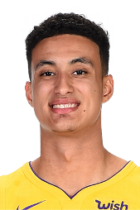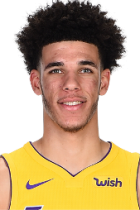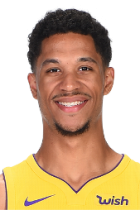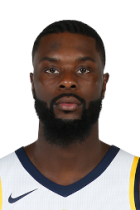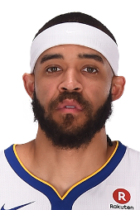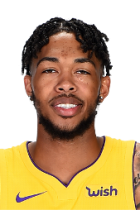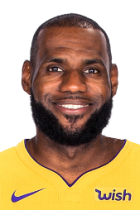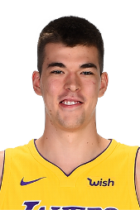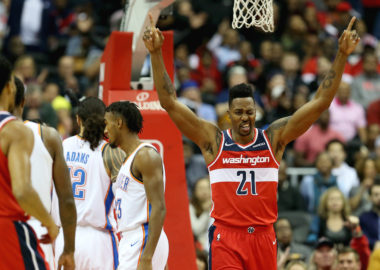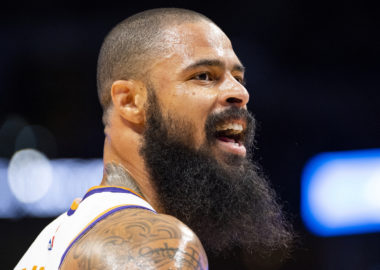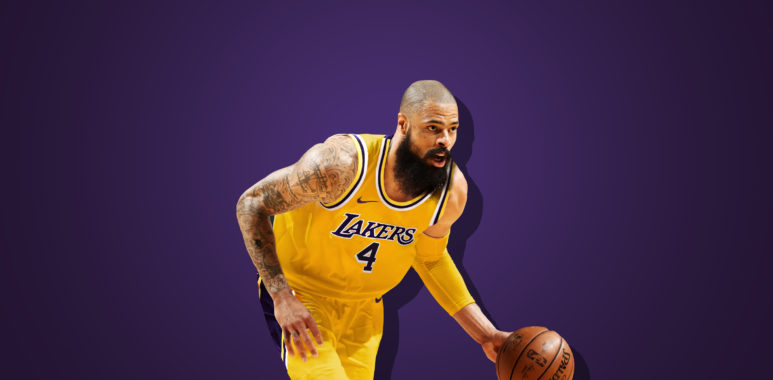
What Tyson Chandler Brings to the Lakers
We have action in Lakerland. Just a day after reports came out that Magic Johnson was displeased with the team and Luke Walton’s performance, Magic and Rob Pelinka decided to jump on an opportunity to bolster the Laker roster with a backup center, Tyson Chandler.
Chandler is being bought out by the Phoenix Suns, opening up this opportunity. There’s still a chance for other teams to make a waiver claim on Chandler, but we’ll assume this unlikely possibility doesn’t happen for the purpose of this article. His role on the team this season has been substantially marginalized, largely in part due to the team’s investment in the new 1st overall selection in the most recent draft, DeAndre Ayton.
We have a small sample to analyze for the 2018-19 season. For a backup center, it’s even smaller. Rather than attempt to ascertain future performance from data on 4 offensive possessions per game and his lowest playing time (12 minutes/game) of his career, we’ll turn to last season’s performance.
Chandler’s Talent Levels
Here is Tyson Chandler’s BBall Index talent profile from the 2017-18 season. His overall percentiles and grades are seen on the left. On the right, his percentiles and grades when compared to centers from the 2017-18 season who played at least 1,000 minutes.
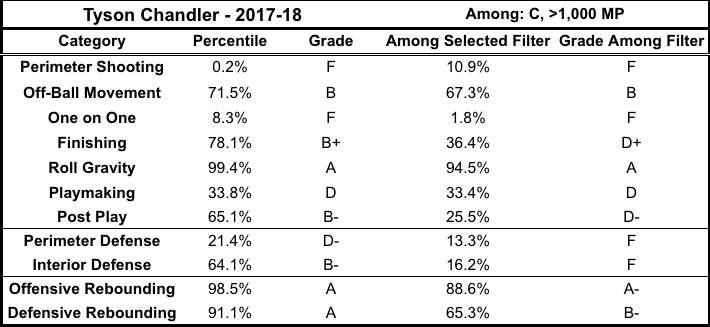
If you’re not familiar with our BBall Index talent grades, you can read about the offense here, defense and rebounding here, and the difference between these talent grades and impact stats you may be used to here.
We can immediately have several takeaways from this profile:
- Chandler is a good rebounder
- Chandler is a great roll threat
- Chandler is a poor defender in all regards, especially when compared to his center peers
- Chandler won’t be a post, shooting, isolation, or playmaking threat
To further contextualize Chandler’s performance, let’s take a look at his grades (vs all players) over the past five seasons:
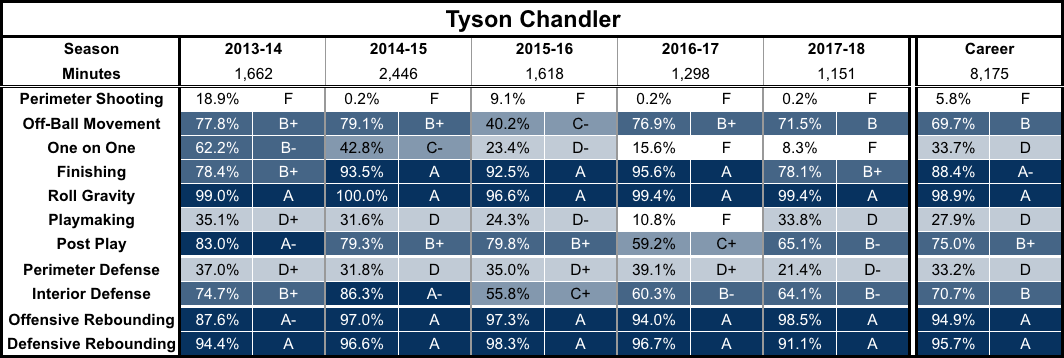
Chandler has been fairly consistent year to year. His finishing has taken a dip. But other than that, 2017-18 Tyson Chandler was a great representation of what Chandler has been over the last handful of years.
Predicting Chandler’s Talent Levels
Shifting our look from behind us to ahead, we can learn more about how Chandler might perform this season. The following grades and percentiles are based on expected growth/decline in each category based on Chandler’s position and age:
Note: The first column, Chandler’s age 35 season, was last year.
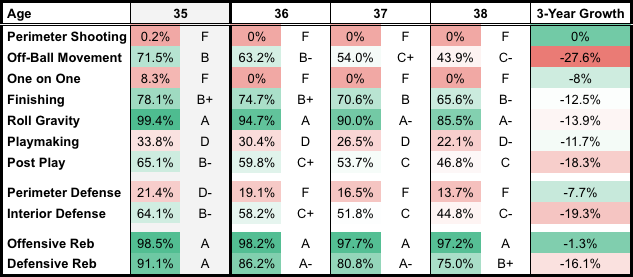
Here are my takeaways from this, which are purely about 2018-19:
- Remember that these grades are vs ALL players. Like above, Tyson Chandler’s Interior Defense is not an asset when you filter to compare to his position.
- Chandler may not drop to the 0th percentile in Perimeter Shooting and One on One, but he’ll likely be in that ballpark.
- The largest drop offs are expected this season in Chandler’s Off-Ball Movement, Roll Gravity, Interior Defense, Defensive Rebounding, and Post Play. So basically, everything LA was looking to get out of Chandler.
When we shift our focus from our talent grades to some other helpful (although far less comprehensive and adjusted for context) stats, Chandler’s rebounding continues to show and his defense continues to concern. 55th percentile opponent rim field goal percentage is not good for a center.
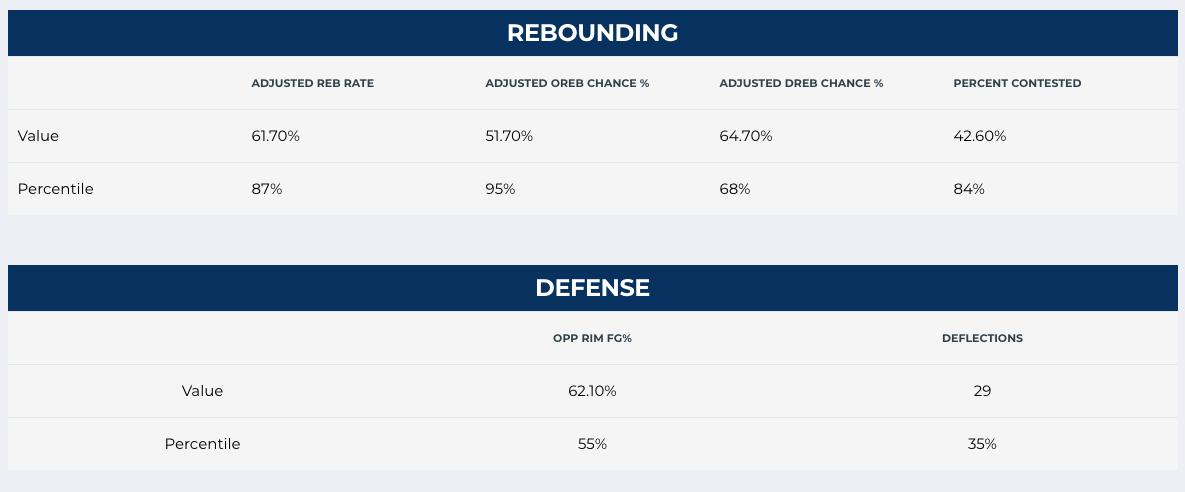
Tyson Chandler’s Impact
We’ve looked at talent, but seeing how those skills have translated to actual impact is also an important piece of the puzzle.
Last season, Chandler’s offensive impact was not great. The only advanced impact/efficiency metric that was a fan was his OPOE/CPOE, which showed him to be almost exactly average on the offensive possessions he commanded once you adjust for the types of possessions he was given.
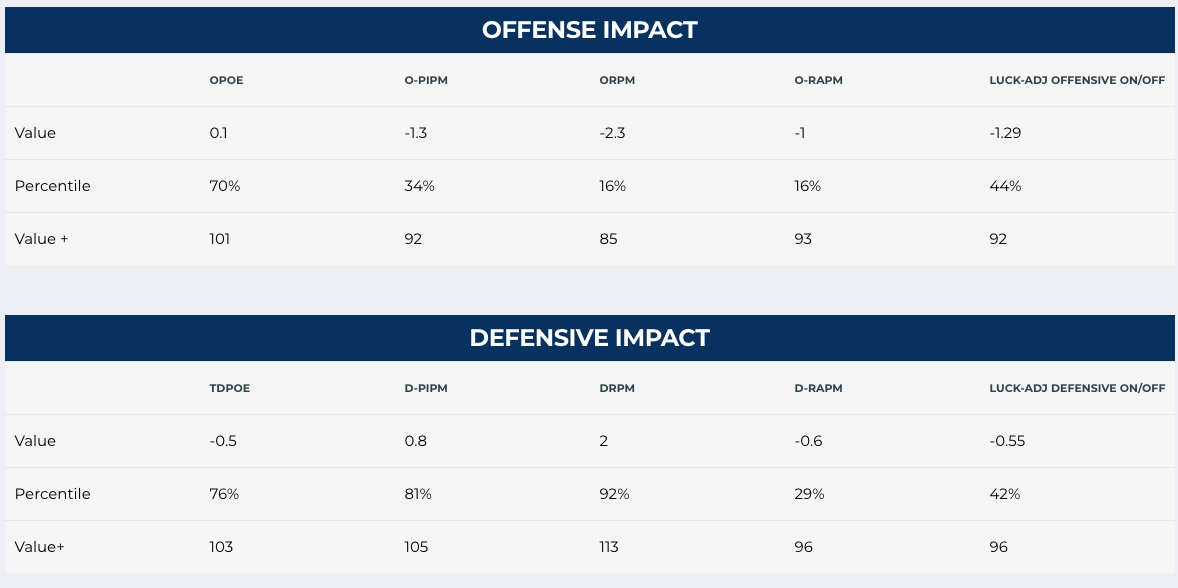
Defensively is where Chandler’s real value shines. Or at least by some measures. TDPOE, D-PIPM, and DRPM showed Chandler to be a big help to his team’s defense when on the court. D-RAPM and his Luck-Adjusted Defensive On/Off rating showed Chandler to be less impactful, but still close to average (his impact brought 96% of what an average player would bring).
When predicting Chandler’s impact for this season, we can turn to Jacob Goldstein’s PIPM career projections. Jacob’s projections have 2018-19 being Chandler’s last season of adding value over a replacement player (not an average player), at a -1.94 PIPM (-2.14 O-PIPM and +0.21 D-PIPM).
What Chandler Brings to the Lakers
Due to roster construction, Tyson Chandler will mean much more to the Lakers than he did for the Suns. LA now has a somewhat viable second healthy traditional center to back up JaVale McGee.
Offense
Chandler is a fairly limited offensive player, but screening on and off-ball along with being a roll threat and active on the offensive boards will allow Chandler to be useful if utilized properly. Luke Walton doesn’t have a history of successful utilization of roster talent on the offensive side of the court, but it should be fairly straightforward for Tyson Chandler.
Defense
While Chandler’s Interior Defense grade isn’t good compared to his position, it’ll still be a step up from what LA has been deploying to defend the rim and post with LeBron James and Kyle Kuzma as small-ball centers. Having any sort of legitimate deterring factor at the rim to help the bench defense survive the straight line drives the perimeter defenders have been allowing will be a big step up.
While Tyson Chandler helps on the inside, he’s a clear liability when it comes to defending the perimeter. He was rarely targeted in isolation mismatches in Phoenix last season, but expect that to change this year in LA with their heavy switching scheme.
Even if not in switches, Chandler may be a liability defending in drop coverage in the pick and roll. 40 players in the NBA were the big man defender on as many possessions as Chandler. He was dead last among that group in defensive points per possession conceded. Among players with as many possessions as him in 2016-18, he was 38th out of 44 players. This looks like it’ll be a liability in 2018-19 for the 36 year old.
Food for Thought
The signing of Tyson Chandler likely pushes Michael Beasley even further down on the bench for the Lakers. Beasley has played 2, 0, 6, 0, 3, 0, 0, and 0 minutes so far this season in each game.
I maintain that Beasley is worth a look for the Lakers. As I recently covered on my Lakers podcast, no player in our database put up talent grades as good as Beasley’s and then were completely benched the following season.
Here’s a quick comparison between the two bigs, compared to Bigs in our database who have played 1,500 minutes:
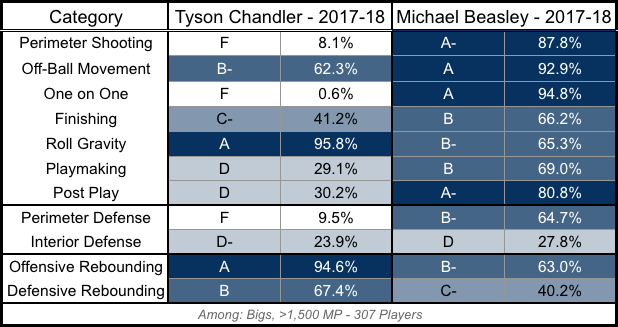
But is Beasley’s 2017-18 legit? I’d say so. Below is his 5-year profile, which makes it fairly clear that his talent levels last season weren’t an anomaly:
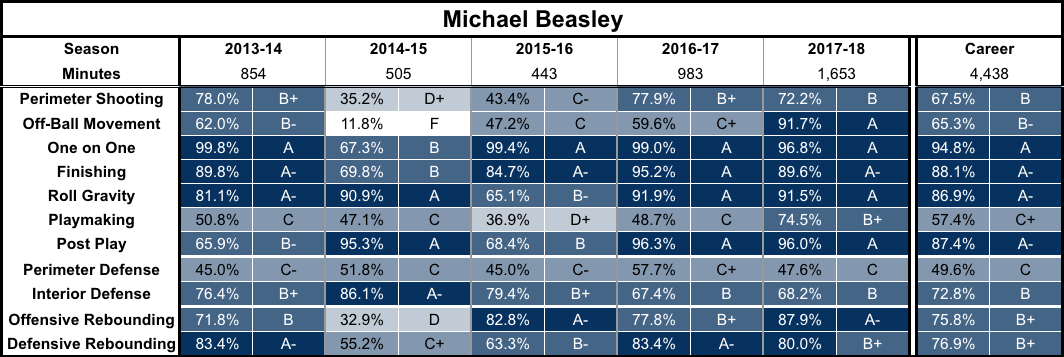
Whether due to a rotation shakeup, injury, coaching change, or other reason, Beasley should get his shot at some point this season. 10-15 minutes per game consistently may provide a nice boost for the Lakers. It may not happen soon, but him making the most of a real opportunity shouldn’t surprise anyone.

